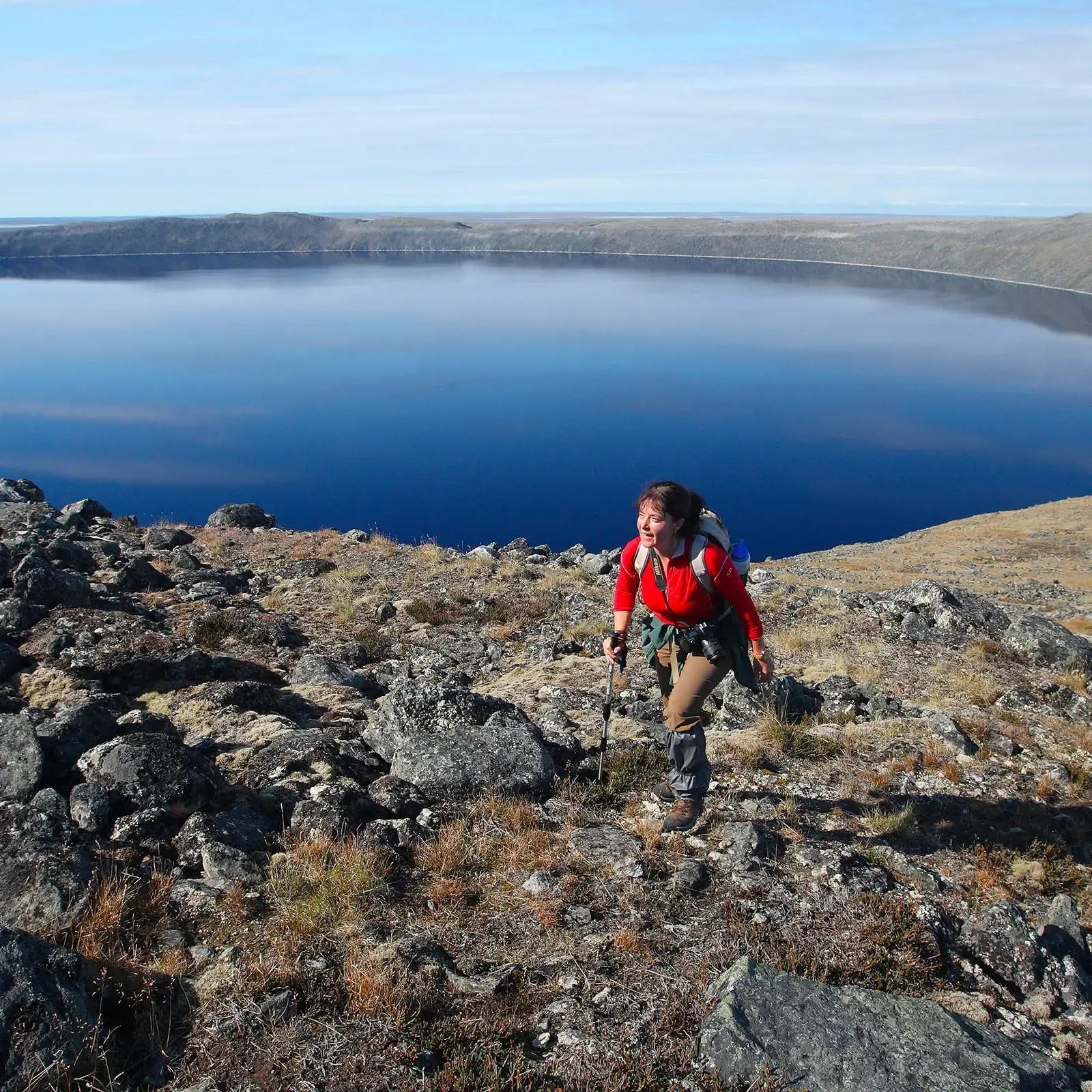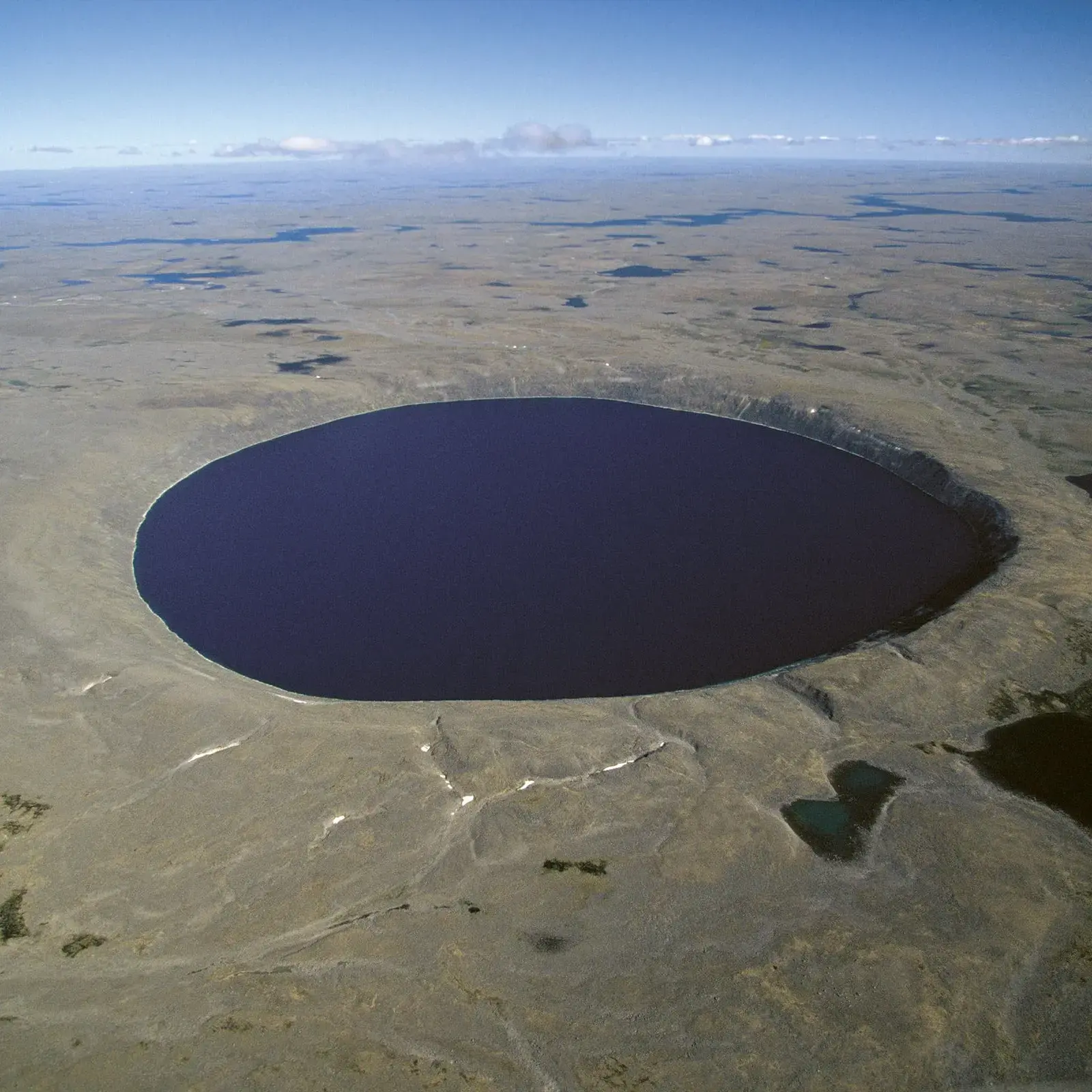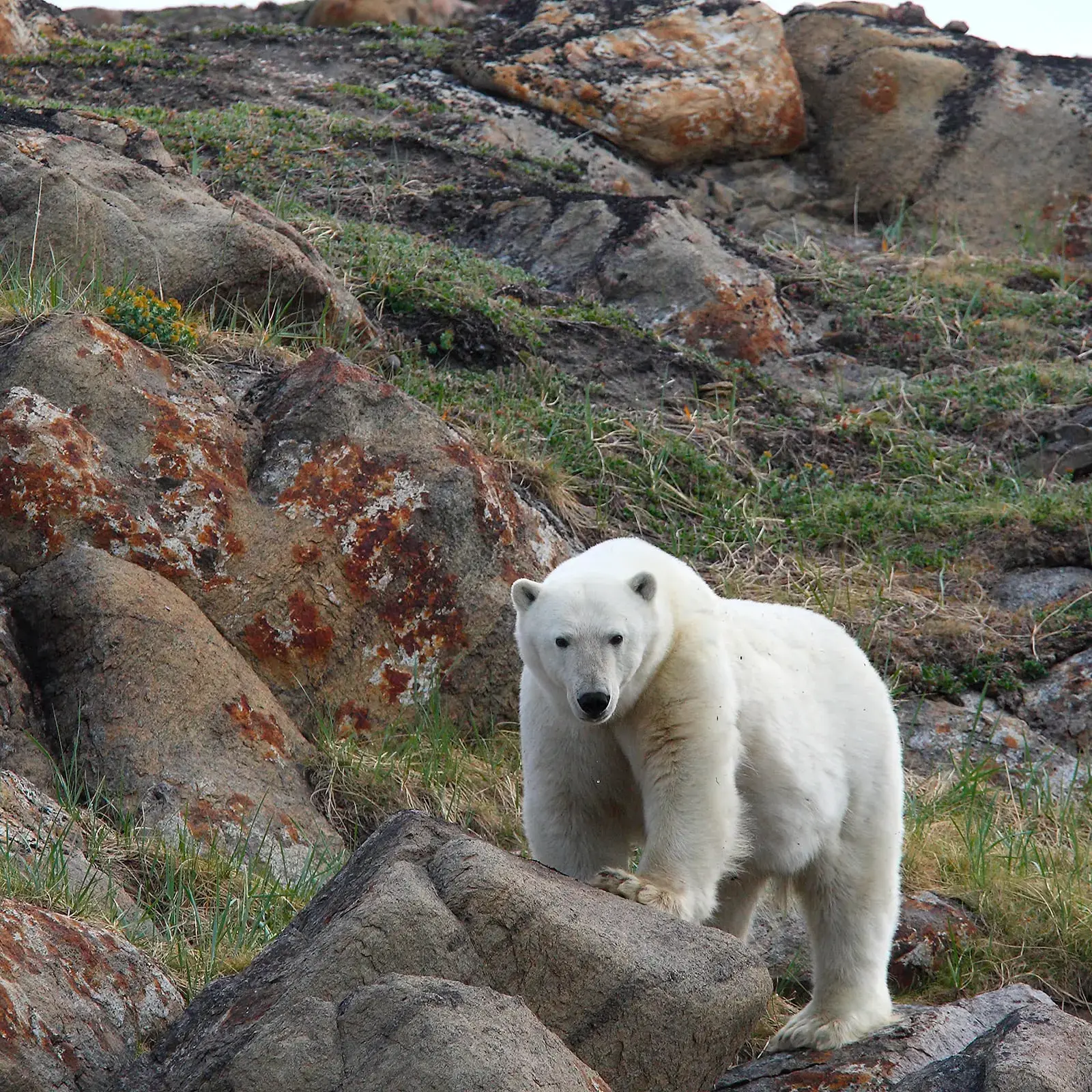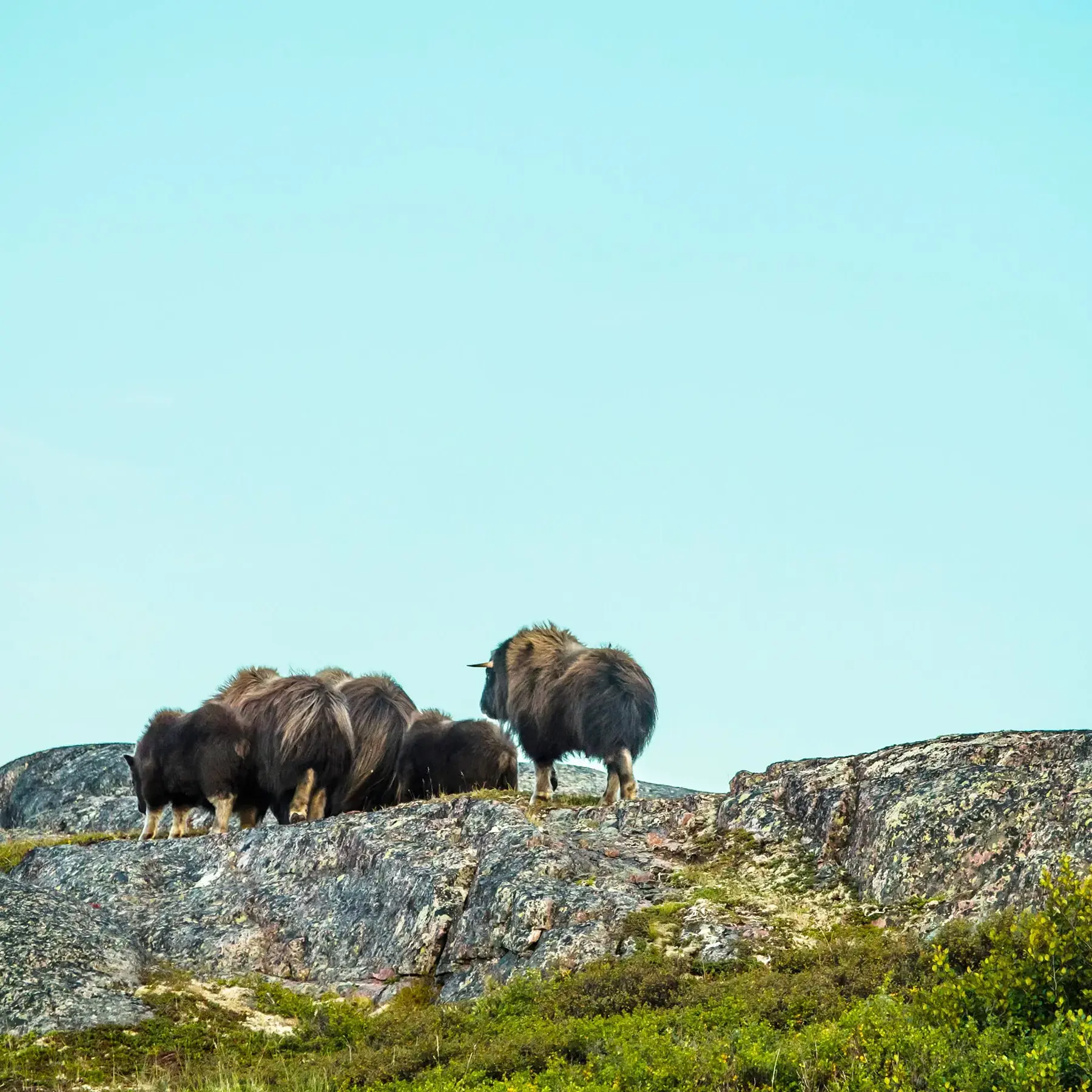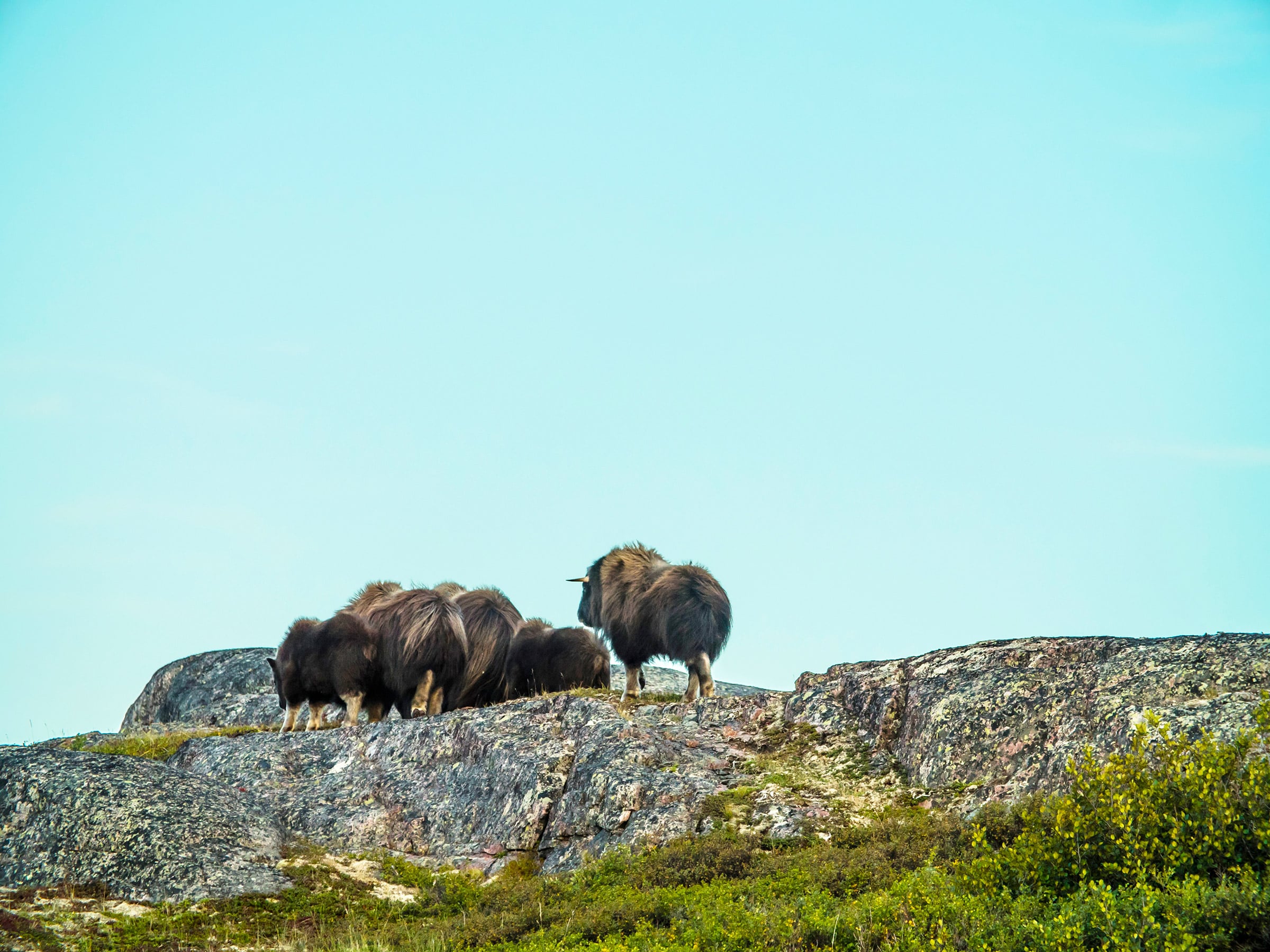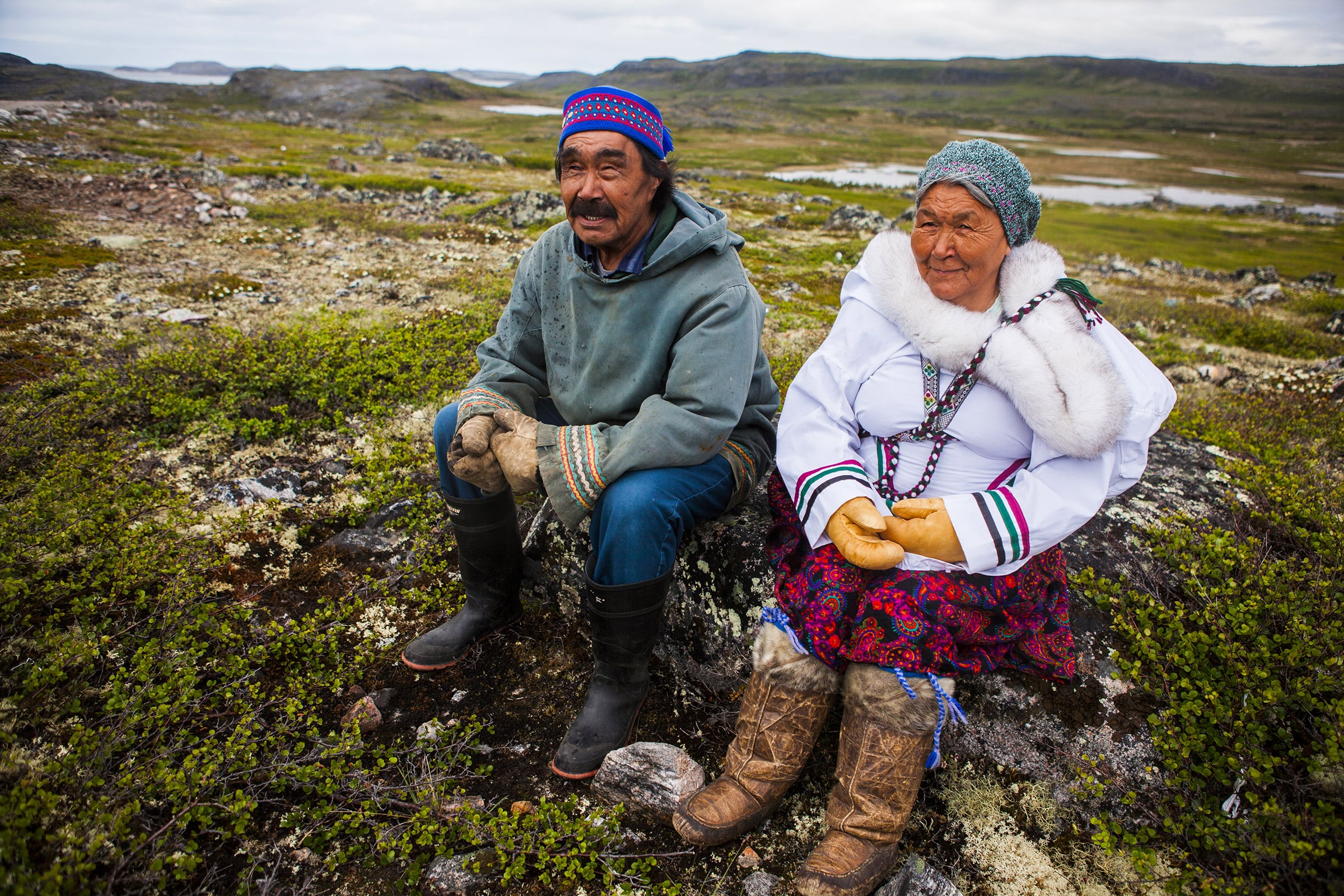This territory, dubbed the Great North for its thousands of kilometres of tundra, boreal forest, mountains, rivers and lakes, offers adventure in its most authentic form. In summer, the sun almost never sets and you can experience four seasons in 24 hours. In winter, the sky comes alive with the northern lights, moving about like luminous marionettes. Stunning!
How to get there
Distance between main cities
Did you know?
To be discovered absolutely
Glaciers, meteorites and snowstorms shaped this land and its inhabitants. Mythical animal life, plant life that flourishes before your very eyes, and 14 villages nestled on the shores of the wide bays.
The Arctic wildlife kingdom
This is the land of Rudolph and his friends, and it’s where the caribou reign supreme. In the spring, thousands of the animals migrate some 3,000 km (1,860 mi.) from James Bay to to the borders of Nunavik, between Hudson Bay and Ungava Bay. The caribou are a tireless species.
They share their territory with wolves, foxes and ptarmigan. Being Arctic animals, they turn white in winter, becoming virtually invisible. But polar bears can catch their scent from miles away.
Polar bears are marine mammals and can easily swim 150 km (93 mi.)!
The Inuit have cohabitated with bears for thousands of years, in mutual respect. Photographic safaris are best taken with an Inuit guide to avoid any confrontation. Bears are at the top of the food chain. Living so close to shore, walruses, belugas and seals are an easy source of protein. When it comes to crossing paths with a bear, it’s best to be a whale, muskox or in the company of an Inuit guide.
A culture happy to embrace tales and games
A zest for life is part of the Inuit DNA. Their place names even have a humorous quality. And their throat singing contests always end in a burst of laughter—even though the person who laughs loses. The Inuit have a great sense of sportsmanship: it’s more important to take part than to win.
The Nunavik culture dates back four thousand years. Life is governed by nature and the seasons and by the topography of the land. It is said that the Inuit have 50 different terms for snow, given how important its precise description is to their way of life. In reality, they have 12 terms.
In Nunavik, mainly women practise throat singing.
There are 14 communities spread along Hudson Bay and Ungava Bay, each with its own history and tales. Anyone returning from a trip to Nunavik has many stories as impressive as the length of the fish featured in the fishing tales they were regaled with!
